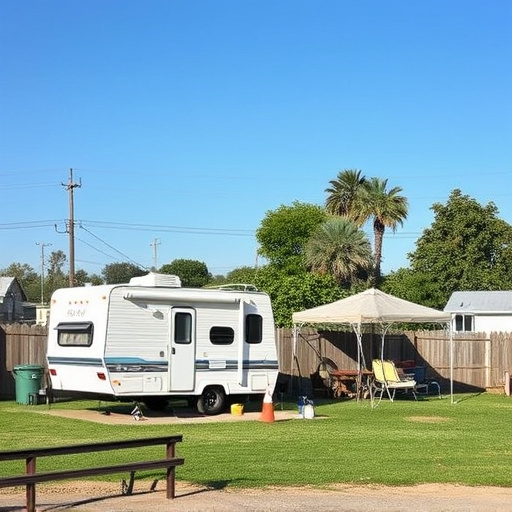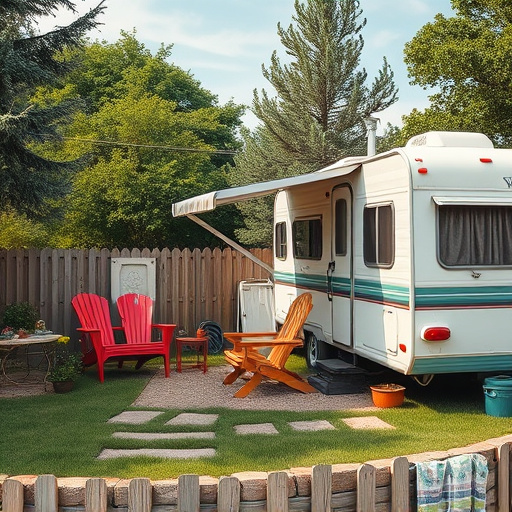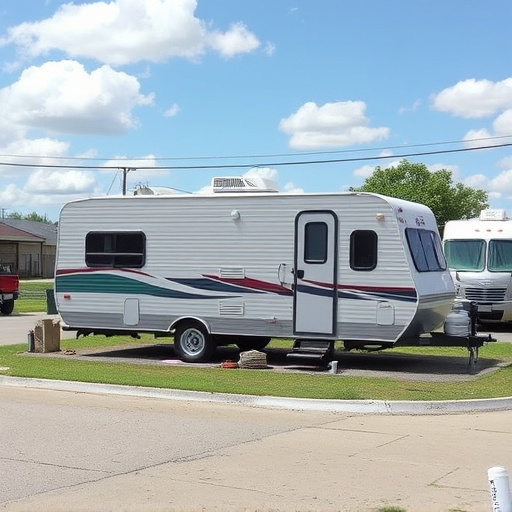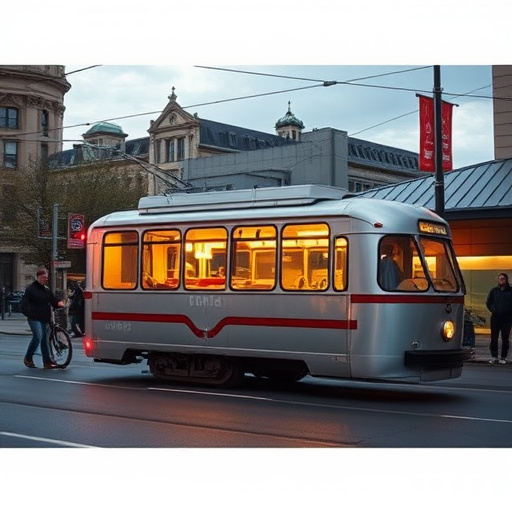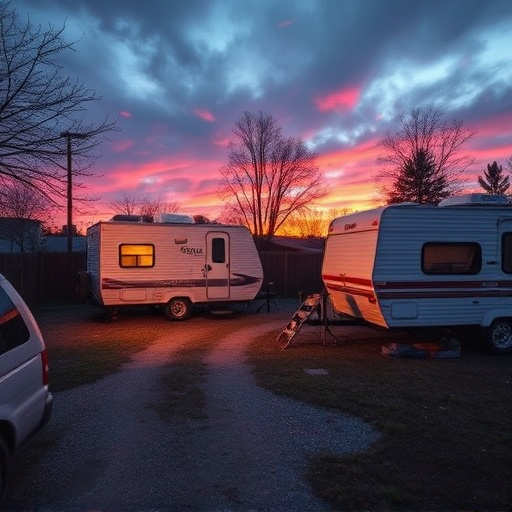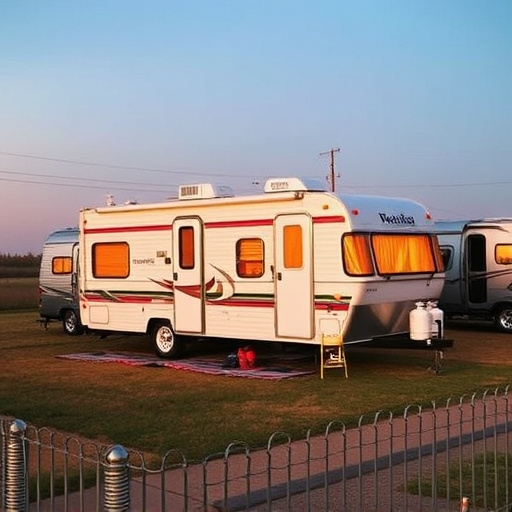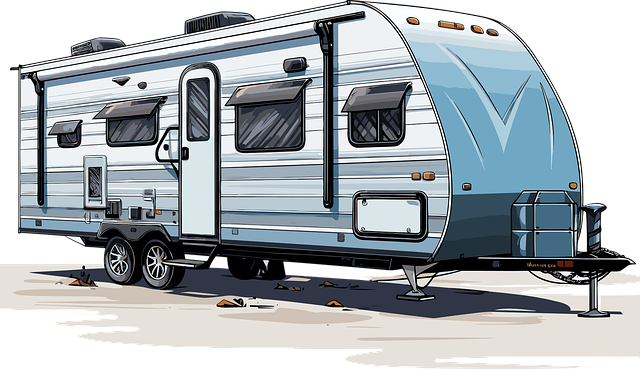Campbellfield Caravans: A Comprehensive Exploration
Introduction
Welcome to an extensive exploration of a unique and ever-evolving concept: Campbellfield caravans, or mobile homes as they are also known, offer a flexible and affordable housing solution that has captured the imagination of many around the globe. This article aims to dissect and analyze every facet of this phenomenon, from its historical roots to its present-day impact and future potential. By delving into various dimensions, we will uncover the significance of campbellfield caravans in addressing housing needs, economic dynamics, and technological innovations.
Understanding Campbellfield Caravans: A Definition and Its Essential Elements
Definition: Campbellfield caravans, or mobile homes, are prefabricated dwellings designed to be portable and easily transportable. They are constructed off-site in controlled environments and then moved to their intended location, typically on a piece of land designated for recreational vehicles or permanent housing.
Core Components:
- Structure: These caravans consist of a main living space with walls, floors, and a roof, often built using modern materials like wood frames, vinyl siding, and energy-efficient windows.
- Infrastructure: Essential systems include plumbing for water supply and sanitation, electrical wiring for lighting and appliances, and heating/cooling mechanisms to ensure year-round comfort.
- Mobility: One of the key features is a retractable or fixed undercarriage that allows for easy towing or self-propulsion, making them highly portable.
- Customization: They can be tailored to various preferences and needs, with options for different floor plans, amenities (e.g., kitchens, bathrooms), and external add-ons like decks or patios.
Historical Context: The concept of mobile homes has its roots in the early 20th century when the need for affordable housing surged during times of economic hardship. In the United States, for instance, the Great Depression led to innovations in prefabricated building techniques, which later influenced the development of campbellfield caravans. Post-World War II, with returning veterans requiring housing, the mobile home industry grew exponentially. Over time, these caravans evolved from basic structures to sophisticated homes on wheels, capable of providing comfortable and modern living spaces.
Significance: Campbellfield caravans offer several advantages:
- Affordability: They provide an accessible option for those seeking affordable housing, whether as a temporary solution or a long-term residence.
- Flexibility: Mobility allows residents to relocate easily, catering to nomadic lifestyles or changing work/life circumstances.
- Sustainability: Prefabrication reduces construction waste and carbon emissions compared to traditional on-site building methods.
- Diverse Applications: They find use in various settings, from permanent residential communities to recreational vehicle parks and disaster relief efforts.
Global Impact and Trends
The influence of campbellfield caravans extends far beyond their birthplace, with significant adoption and adaptation across different regions:
| Region |
Key Trends & Impacts |
| North America |
The mobile home market is robust, driven by a preference for affordable housing and recreational vehicle living. States like Florida and California have thriving communities of campbellfield caravan residents. |
| Europe |
In countries like the UK and Germany, these caravans are popular in retirement villages and as second homes, offering a sense of community and mobility. |
| Asia-Pacific |
Rapid urbanization and a growing middle class drive demand in countries like Australia and Japan, where compact living spaces cater to urban lifestyles. |
| Emerging Markets |
In Africa and South America, they provide a solution for temporary housing during economic development projects and disaster relief efforts. |
International trends reveal a universal appetite for flexible, affordable housing solutions, with campbellfield caravans filling diverse needs worldwide. As urbanization continues to shape global landscapes, these mobile homes are poised to play an increasingly vital role in addressing housing challenges.
Economic Considerations
Market Dynamics:
- Demand Drivers: Factors such as economic downturns, urban migration, and natural disasters stimulate demand for campbellfield caravans. They offer a cost-effective alternative to traditional housing during uncertain times.
- Market Segments: The market caters to various segments, including retirees, young professionals, families, and those affected by disasters, each with unique needs and preferences.
- Pricing Trends: Prices vary widely based on size, features, and location. Generally, they offer a more affordable option than traditional stick-built homes, making them attractive to budget-conscious buyers.
Investment Patterns:
- Real Estate Developers: Many developers are integrating campbellfield caravan parks into their portfolios, recognizing the growing demand for flexible housing options.
- Private Investors: Individuals and families invest in these properties as rental assets or as a form of retirement planning, leveraging the stability and affordability they offer.
- Government Initiatives: Some governments provide incentives and subsidies to promote the construction and adoption of mobile homes, particularly for affordable housing programs.
Economic Impact:
- Job Creation: The industry contributes to local economies through construction, manufacturing, and maintenance jobs.
- Community Development: Well-planned caravan parks can stimulate local commerce, enhance infrastructure, and foster a sense of community.
- Tourism Boost: In recreational settings, these caravans attract tourists, contributing to the growth of local tourism industries.
Technological Advancements
Technological innovations have significantly enhanced the design, functionality, and appeal of campbellfield caravans:
- Smart Home Integration: The integration of smart home technology allows for automated lighting, temperature control, security systems, and entertainment centers, elevating the living experience to modern standards.
- Energy Efficiency: Advancements in insulation, windows, and HVAC systems have made these caravans more energy-efficient, reducing running costs and environmental impact.
- Modular Design: Modular construction techniques enable faster assembly, higher quality, and customization, allowing for unique floor plans and features.
- Off-Grid Capabilities: With the addition of solar panels, battery storage, and water purification systems, some caravans can operate independently, appealing to off-grid enthusiasts.
- Telecommuting Support: High-speed internet connectivity and ergonomic workspaces make these dwellings suitable for remote workers, contributing to a growing trend of digital nomadism.
Policy and Regulation
The development and operation of campbellfield caravans are subject to various policies and regulations, which vary significantly by region:
- Building Codes: Local building codes dictate construction standards, ensuring safety and quality. These codes often require specific materials, structural integrity, and fire safety measures.
- Zoning Laws: Zoning regulations control the placement and density of caravan parks, influencing their location and size. They may restrict permanent residency or have specific requirements for recreational use.
- Health and Safety: Public health guidelines focus on sanitation, potable water supply, and waste management to prevent health hazards within caravan communities.
- Environmental Protection: Regulations may limit the disposal of waste and encourage sustainable practices in construction and operation to minimize environmental impact.
- Licensing and Registration: Many regions require registration and licensing for ownership and usage, ensuring accountability and facilitating community management.
Challenges and Criticisms
Despite their many advantages, campbellfield caravans face several challenges:
- Stigma: There is often a negative perception associated with mobile homes, stemming from outdated stereotypes about their quality and permanence. Overcoming this stigma is crucial for widespread acceptance.
- Limited Customization: While customizable, they may not cater to unique architectural tastes or specific cultural preferences, leaving room for improvement in design flexibility.
- Site Availability: Finding suitable locations for caravan parks can be challenging due to zoning restrictions and land ownership dynamics.
- Maintenance Costs: Over time, these caravans require maintenance, and the costs can add up, particularly for older models or those lacking proper care.
- Connectivity: Remote locations or insufficient infrastructure may hinder internet connectivity, posing challenges for remote workers and those reliant on digital services.
Proposed Solutions:
- Education and Awareness: Promoting the benefits and modern capabilities of campbellfield caravans through campaigns and events can shift public perception.
- Innovative Design: Encouraging cutting-edge design and collaboration between architects and caravan manufacturers can address customization needs.
- Public-Private Partnerships: Collaborating with governments and land developers can help secure suitable sites for caravan parks, ensuring their availability.
- Community Engagement: Involving residents in maintenance programs and community events fosters a sense of ownership and reduces maintenance costs.
- Infrastructure Upgrades: Investing in local infrastructure, especially internet connectivity, supports digital nomads and remote workers.
Case Studies: Exemplary Applications
1. Retiree Haven, Florida
This vibrant community is home to hundreds of campbellfield caravan residents aged 50 and over. The park offers a range of amenities, including a swimming pool, fitness center, and social clubs, fostering an active retirement lifestyle. The success lies in its focus on community building, providing a sense of belonging and support for its elderly inhabitants.
2. Urban Mobile Living, Tokyo, Japan
In the bustling metropolis of Tokyo, a new concept emerged—a compact, high-tech campbellfield caravan park designed for urban professionals. These modern dwellings offer efficient living spaces, with smart home technology and innovative space-saving designs. The project addressed the city’s housing needs while providing a unique, affordable option for young workers.
3. Disaster Relief Effort, Houston, Texas
After Hurricane Harvey, a temporary campbellfield caravan park was established to house displaced families. Its rapid deployment, coupled with essential services and community support, offered much-needed relief. This case highlights the caravans’ versatility in providing immediate housing solutions during crises.
Future Prospects
The future of campbellfield caravans is promising, shaped by emerging trends and technological advancements:
- Sustainable Living: There will be a growing emphasis on eco-friendly designs, utilizing renewable energy sources and efficient waste management systems.
- Modular Construction: Modular construction techniques will continue to evolve, allowing for faster, more affordable, and customizable caravans.
- Smart Communities: Caravan parks may become fully integrated smart communities, offering advanced connectivity, shared amenities, and automated services.
- Global Expansion: As urbanization accelerates worldwide, the demand for these dwellings is expected to rise, particularly in regions with limited affordable housing options.
- Customized Experiences: With advancements in 3D printing and modular design, campbellfield caravans could offer even greater customization, catering to individual tastes and lifestyles.
Conclusion: A Dynamic Housing Solution
Campbellfield caravans have evolved from humble beginnings to become a dynamic and versatile housing solution with global reach. Their ability to provide affordable, flexible living spaces has made them an attractive option for diverse populations. As the world navigates rapid urbanization and changing housing needs, these mobile homes will continue to play a significant role in shaping future landscapes.
By addressing economic considerations, embracing technological advancements, and navigating policy challenges, campbellfield caravans stand poised to revolutionize housing affordability and accessibility. With continued innovation and thoughtful planning, they can contribute to more inclusive, sustainable, and vibrant communities worldwide.
FAQ Section: Answering Common Queries
Q: Are campbellfield caravans only suitable for temporary living?
A: While some are designed for short-term use, many caravan parks have become permanent homes for their residents. The portability aspect allows for flexibility, catering to both temporary and long-term housing needs.
Q: How do I go about setting up a campbellfield caravan park?
A: Establishing a caravan park involves obtaining necessary permits, securing suitable land, and designing amenities to meet local regulations. Consulting with industry experts and community leaders can facilitate the process and ensure a successful, well-integrated park.
Q: Can I customize my campbellfield caravan to suit my unique needs?
A: Absolutely! Modern manufacturers offer various customization options, allowing you to tailor your caravan’s layout, features, and aesthetics to your preferences. From floor plans to exterior finishes, the possibilities are extensive.
Q: Are campbellfield caravans energy-efficient?
A: Yes, significant advancements in insulation, windows, and HVAC systems have made these dwellings more energy-efficient. Many modern caravans incorporate solar panels and battery storage systems, further reducing their environmental footprint.
Q: How do I maintain a high quality of life living in a campbellfield caravan?
A: Regular maintenance, community engagement, and access to essential services are key. Many parks offer on-site management, social events, and amenities like recreational facilities to enhance the overall living experience.
The Campbellfield Vacationer Caravan Range offers a diverse selection of vehicles designed for outdoor enthusiasts and families, featuring innovative features, spacious interiors, and efficient layouts. With modern amenities like large windows,…….
Continue Reading
Vacationer Caravans provide a range of self-contained vehicles for diverse travel needs, offering both adventure and comfort. Local experts in Campbellfield specialize in these caravans, providing personalized advice, ensuring optimal selection…….
Continue Reading
Vacationer caravans, or travel trailers, offer a flexible and unique way to explore diverse destinations, catering to various preferences and budgets. Campbellfield provides an extensive selection of these portable homes through strategic partne…….
Continue Reading
Campbellfield residents now have a new hub for their travel dreams with the opening of Vacationer Caravans, offering a diverse range of top-quality Campbellfield caravans for every need and budget. The state-of-the-art dealership provides expert…….
Continue Reading
Campbellfield Caravans offers modern yet rustic caravan accommodation in serene settings, ideal for families and couples seeking tranquility and adventure in Australia's diverse landscapes. With a range of campbellfield caravans catering to…….
Continue Reading
Campbellfield offers a captivating treasure for travel enthusiasts seeking unique vacation experiences through its diverse range of campbellfield caravans. These modern and retro designs cater to all tastes, budgets, and travel types. Whether fo…….
Continue Reading
Vacationer Caravans are a popular and flexible choice for travelers seeking an affordable way to explore new places, offering home comforts and modern amenities. Campbellfield's Caravan Outlet provides top-quality models at unbeatable price…….
Continue Reading
Vacationer Caravans offer versatile, affordable, and modern options for exploring Campbellfield and beyond. Effective inventory management is key for rental businesses, optimizing utilization, meeting demands, and maximizing profits. Exploring t…….
Continue Reading
Vacationer Caravans offer luxurious camping experiences with modern amenities, catering to diverse needs through various models and sizes. Local dealers in Campbellfield, Victoria, provide expert guidance, maintain inventory updates, and ensure…….
Continue Reading
Vacationer Caravans at 59 Capital Link Dr, Campbellfield VIC 3061, Australia, offers a range of mobile living solutions for travelers seeking unique experiences. From compact models for weekends to family-sized options for extended trips, their…….
Continue Reading
Vacationer Caravans in Campbellfield offer a new way to enjoy leisure time with innovative, comfortable designs suitable for diverse preferences and budgets. The recently opened dealership provides expert advice, a wide range of models from comp…….
Continue Reading
Campbellfield's thriving caravan scene offers a diverse range of campbellfield caravans catering to various preferences, budgets, and travel styles. From retro to modern models, visitors can explore vibrant markets, choose from compact to s…….
Continue Reading
The Campbellfield Vacationer dealership offers a range of modern, technologically advanced Vacationer Caravans catering to diverse travel needs. With options from compact weekenders to spacious family vehicles, their knowledgeable staff assist i…….
Continue Reading
Campbellfield caravans offer a diverse range of models tailored for various traveler needs, from compact and lightweight to spacious and luxurious options. Crafted with quality, innovative design, advanced amenities, and robust construction, the…….
Continue Reading
Campbellfield Caravans, a renowned industry leader, offers high-quality, innovative vacationer caravans for outdoor enthusiasts. Their dealers provide expert advice, personalized services, and after-sales support, enhancing the caravan ownership…….
Continue Reading
Campbellfield, a Melbourne suburb, is known for its vibrant caravan community and diverse range of campbellfield caravans. Reputable local dealers specialize in vacationer caravans, offering expert advice, personalized service, and competitive p…….
Continue Reading
Campbellfield has become a popular destination for caravan enthusiasts due to its vibrant suburban enclave and lush green landscapes, offering tranquility, accessibility, and well-maintained facilities. The area caters to diverse preferences wit…….
Continue Reading
Campbellfield, a tranquil retreat surrounded by stunning landscapes, offers a peaceful escape from urban life. Known for its natural beauty, it caters to nature lovers with hiking trails, lush forests, and serene lakeside spots. The area is idea…….
Continue Reading
Vacationer Caravans in Campbellfield are a popular choice for affordable, flexible travel, offering various sizes and customizable amenities like kitchens, sleeping areas, and entertainment systems. Campbellfield's vibrant market scene prov…….
Continue Reading
